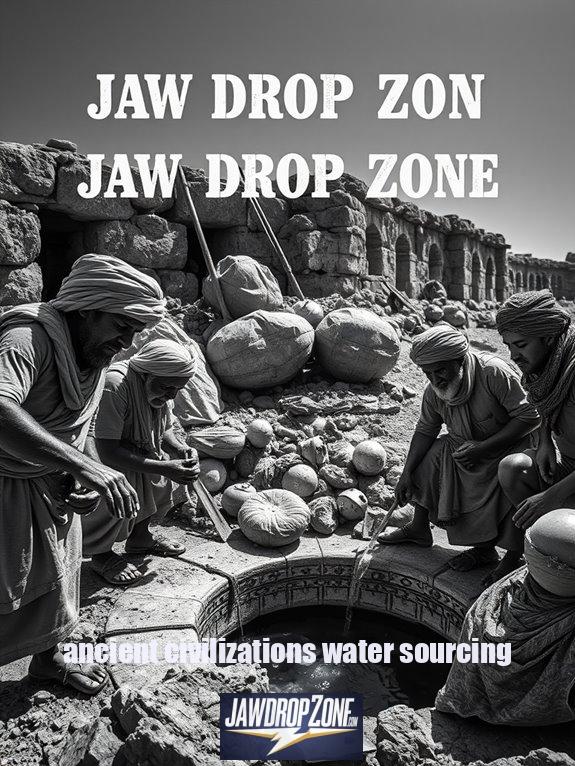Have you ever wondered how nature purifies water? Well, it does it quite brilliantly! Xylem filters from trees can clear out bacteria for two whole years. Ancient sand filters were the secret of Egyptians, showcasing humanity's long-standing quest for clean water. And sunlight? Just a few rays can zap impurities away! These fascinating methods not only provide fresh drinking water but also inspire a sustainable future. Curious about more surprising filtration tricks? Stick around, there's plenty more to discover!
Quick Takeaways
- Xylem filters utilize tree branches to effectively purify water, removing bacteria like *E. coli* for up to two years sustainably.
- Activated charcoal adsorbs harmful chemicals, enhancing water taste and freshness, while supporting greywater recycling efforts.
- Ceramic filters crafted from clay trap bacteria and sediment, providing a durable and stylish water purification solution.
- Sunlight purification harnesses UV light from the sun to purify water, requiring minimal resources for small-scale applications.
- Ancient sand filtration techniques, used for centuries, remain relevant today, offering a simple and effective method for removing contaminants.
Natural Water Filtration Techniques

When you're parched and in desperate need of clean water, wouldn't it be shocking to learn that nature has gifted us with some incredible filtration methods? I mean, who knew tree branches could double as a water-purifying superhero?
Enter xylem filters, those fabulous natural sieves that kick bacteria like *E. coli* to the curb. Seriously, just a simple branch can keep your H2O safe for up to two years. Talk about a long-term relationship!
Then there's activated charcoal, which isn't just for your trendy hipster friends' smoothies. This ancient rock star of the filtration world has been cleaning up our water for centuries, and it does it with style. It adsorbs nasty chemicals like a sponge, leaving your water fresher than your favorite artisanal brew. Greywater recycling helps conserve freshwater resources, making activated charcoal even more valuable in our water-sourcing efforts.
And if you're envisioning a mad scientist in a lab coat, let me introduce you to ceramic filters—think of them as the classy, understated option. They trap everything from bacteria to sediment, and they come from good ol' clay, making them the sustainable choice.
Now, if you're feeling extra fancy, how about harnessing the power of the sun? Sunlight can purify water just by chilling out in a sunny spot for a few hours. It's like nature's very own UV filter—but without the hefty price tag!
These natural filtration methods aren't just fascinating; they're essential for communities needing clean water. That's why I created Jaw Drop Zone—to share these jaw-dropping discoveries.
Ancient Sand Filtration Techniques

Envision sipping clean water that's been purified using techniques as old as civilization itself—sounds like magic, right?
Ancient Egyptians were the original water wizards, flaunting sand filters on tomb walls! By the 18th century, microscopes revealed that not all water is "just water."
Who knew sand could be so fancy? I guess that's why I created Jaw Drop Zone—to share these mind-blowing revelations!
References
- https://www.societyforscience.org/blog/natural-materials-successfully-filter-greywater/
- https://www.wisewell.com/blogs/news/natural-water-filters
- https://www.fountain-filters.co.uk/blog/7-ways-purify-water-naturally-drinking-cooking-hygiene-54.html
- https://www.sciencebuddies.org/science-fair-projects/ask-an-expert/viewtopic.php?t=14148
- https://news.mit.edu/2021/filters-sapwood-purify-water-0325
- https://www.pentair.com/en-us/water-softening-filtration/blog/history-of-water-filtration.html
- https://shawresources.ca/blog/2020/12/01/sand-filters-work/
- https://www.waterandwastewater.com/sand-filtration-effective-water-purification-method/
- https://www.aquaoxwaterfilters.com/the-history-of-water-filters/



